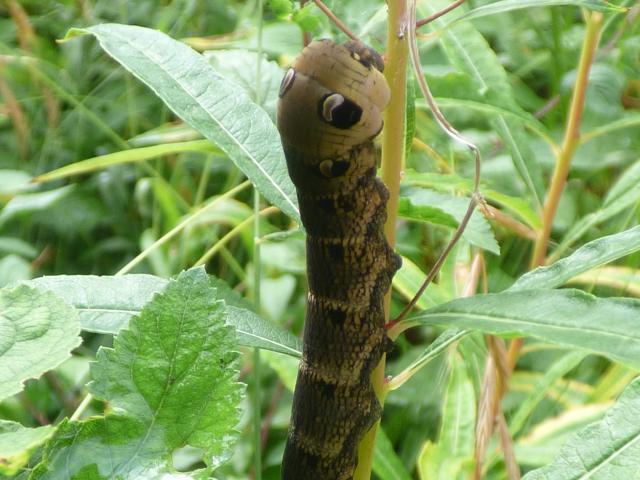We hear from Dr Phil Sterling, Building Sites for Butterflies Programme Manager and keen moth-er on how he became interested in the species and what they mean to him.
Where did your passion for moths come from?
I always wanted to be a zoologist from about the age of seven and that’s how I’ve ended up 55 years later, and I’m still loving it. I’ve been so fortunate to be able to carry out my career in ecology and natural history.
I got my first moth trap when I was eight years old, and I was running that with my brother and my father in the back garden in an army camp outside Winchester. In that year we had all sorts of interesting moths come into the trap, including about one hundred examples of a moth called the Brighton Wainscot. Sadly, this moth is now extinct in Britain. That was quite a shock really because here was a moth that was incredibly common in agricultural land in southern England in the 1960s and by the late 1970s it had virtually disappeared, and it is now long gone. The industrialisation of agriculture is to blame. That’s really what’s fired-up my conservation passion, we’ve seen so much of our once flowery countryside disappear in the last 50 years and that’s driven my desire to put something back while I’m on this Earth, to go out to do my bit to make it better. So, there’s passion in my being interested in butterflies and moths, and for their conservation through the work that I do day-to-day.
What is your favourite moth (and why?)
I would probably go for the Elephant Hawk-moth. There’s something very special about them, it’s a moth that’s got remarkable colour as an adult – it’s mainly pink. It’s quite amusing to talk to people about a real pink elephant, it’s not a hallucination! But it’s also got a fascinating life history. The caterpillar has these amazing eyespots and we believe the eyespots have a function, they are mimicking the eyes of a snake.

So, despite the relatively small size the of the caterpillar in comparison with a snake, it’s almost certain to be looking like a snake to a hungry bird. When at rest the caterpillar is camouflaged against the leaves of the fuschia or willowherbs it eats but if you tap the front of the caterpillar, as an insect-eating bird might do testing if it was a meal, the caterpillar’s head contracts into the body expanding the body behind and these huge eyespots appear. That sudden change from a caterpillar that’s hiding at rest to one that is showing its eye spots causes a startle reaction in a bird and it flies off. We believe that a bird’s reaction to a snake is innate, hard-wired into its brain. A bird is not likely to survive its first encounter with a real snake so it cannot learn to avoid snakes by experience. Birds are unlikely to hold a perfect image of a snake’s head in their brain, they are likely to use visual cues, such as the shape and colour of an eye. In the natural world when hunting for prey, a bird is unlikely to see a whole snake anyway, so it pays to avoid anything that even looks partly like a snake, big or small, just in case because the consequence of not doing so could be lethal. The result is that caterpillars of some moths and butterflies, and other insects such as some praying mantis, all over the world (whether snakes are present or not), have evolved eyespots to mimic parts of a snake. Amazing, eh?
What do moths represent to you?
This is me as an Ecologist – moths are a part of the ecosystem and what they represent to me is that higher-level above the wildflowers and the trees and the shrubs we see. A good understanding of how moths live on and use plants is so important to how we can conserve them. It’s simply not good enough to equate the presence of a plant and plant diversity to achieving ecosystem conservation. Those plants must be in the right condition for the moths, and we need to understand how each species uses and specialises on the different parts of the plant, as well as how they spend their time when not on the plant, if we are to successfully look after them.
So, if we were to take an oak tree, for instance, how many species of moth can live within the oak? In Britain, it’s 213 (and even more on willows, 267!). If we looked at the way that moths use oak, we can see that there are species that live in the wood in the tree, in the bark of the trunk, on the algae that grow on the bark, there are species that live in the twigs, in the bark of the twigs, in the buds, the flowers, the pollen, and finally and most obviously, on and within the leaves. We commonly think that most caterpillars feed on the leaves and that’s what lots of them do, but they’ve also evolved to specialise on every other part of the plant. Moths occupy this huge diversity of niches, or spaces, in the natural environment and represent a layer of complexity above the level of the plants on which they live. Understanding that complexity is key to their conservation.
Take action

Worryingly, moths have declined in abundance for the last 40 years, with three species becoming extinct as recent as 2000. If you’re moth-mad like Phil, or want to contribute to our work in saving moths, please download the guide available to celebrate #MothsMatters 2022.


